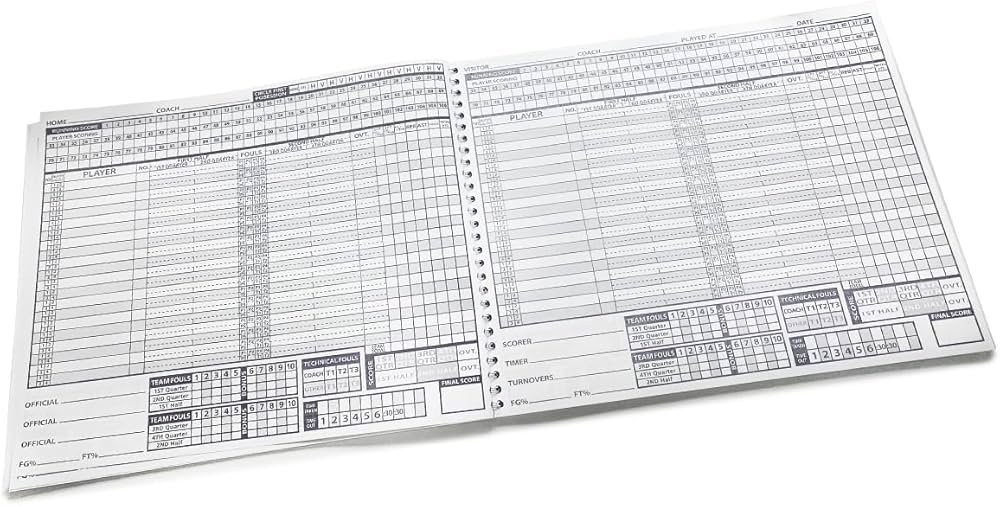Okay, so I was trying to keep track of basketball games, you know, just for fun and to see how everyone’s doing. I started with a simple notebook and pen, but it quickly turned into a mess. Players’ names were all over the place, and I kept losing count of the scores. It was a real headache.

Then, I thought, “There’s gotta be a better way!” That’s when I decided to make a proper scorebook. I grabbed a fresh notebook and started dividing the pages into sections.
Make a template
First things first, I created a template. I drew columns for each player’s name, their field goals, free throws, and total points. It seemed simple enough. But when the game started, things got hectic. I was scribbling down numbers so fast that my handwriting became unreadable, even to me! I was crossing out mistakes left and right, and the whole thing looked like a toddler’s art project.
I realized I needed something more organized, so I went online and looked for some scorekeeping tips. I found some cool scorebook templates that had separate sections for each quarter and even spots to track fouls and timeouts. That was a game-changer! I redesigned my template based on what I found, and it made a world of difference.
Record it!
Now, during the games, I could neatly record everything in its proper place. I started using different colored pens for each team, which made it even easier to follow. I also added a section to note down the key plays, like who made the buzzer-beater shots or any crazy dunks.
- Write down the date, time, and location of the game.
- List the names of both teams.
- Note the starting lineup for each team.
It took a few games to get the hang of it, but I finally got into a rhythm. I even started tracking stats like rebounds and assists, just to make it more interesting. My friends were pretty impressed with my detailed scorebook, and some even asked me to keep score for their games too!
Summarize the game data
After each game, I would sit down and summarize the data. I calculated





















